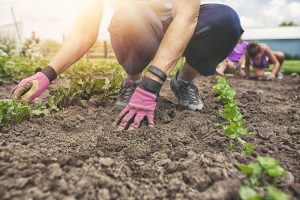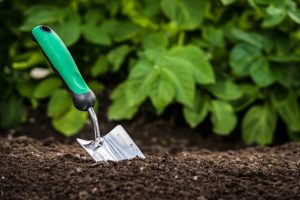Many gardeners understand that a plant in a container cannot rely on the potting soil for nutrition, at least not forever. Outdoor plants that are growing in the yard are naturally replenished to some extent, by plants and old leaves that are slowly decomposed by rain and microbial action. This accumulated plant debris is a natural fertilizer.
Nutritional supplements are commonly called plant food or fertilizer. The term “plant food” has often caused hostile reactions within academic horticulture circles. Although it helps to think of fertilizer as plant food, it’s not. Technically, plants manufacture or produce their own food by photosynthesis. This natural process within the plant portions that contain chlorophyll converts carbon dioxide and water in the presence of sunlight into sugars that are the building blocks of green tissues. The mineral nutrients that are found in fertilizer are necessary to stimulate photosynthesis and therefore make food production possible.
Houseplants or plants that are grown in containers are quite isolated from the natural fertilization cycle. They struggle enough in their pursuit of light and water. Only when the nutritional needs of the plant are met by the conscientious grower, can plant vigor be insured. A vital and yet integral part of any plant maintenance program should be a regular fertilization schedule.

Most houseplant nutritional problems can be controlled with three major fertilizer elements.
The first element listed by number on the plant food package is nitrogen (N). It is the most important to overall plant growth. It also is the quickest one to dissolve in water and He available through the roots. Unfortunately, nitrogen is also the Element most quickly removed or leached out of the soil. Often much of the nitrogen disappears out the drainage holes before it is absorbed by the roots.
Within the plant, most of the ingested nitrogen is utilized in the manufacture of leaf tissue. A plant that has received an adequate supply of this vital nutrient will exhibit lush green leaves and plant parts. The lack of adequate nitrogen may result in lower-leaf drop, stunted growth, and an overall faded-out appearance. Too much nitrogen, however, can result in an overabundance of lush foliage or leaves. Tomatoes are a prime example of too much foliage with few fruits as the result of too much nitrogen. The leaves that are produced with an abundance of nitrogen are often soft and therefore weak. They are less likely to support strong plant growth and are often more susceptible to disease and insect attack.
Phosphorus (P) is the second number on the fertilizer product label. This figure is representative of the percentage of phosphoric acid, not just pure phosphorus. Plants need less phosphorus than nitrogen and also soils lose less phosphorus to leaching.
The presence of adequate phosphorus insures a vigorous root system and a sturdy stem. The element’s major importance is in speeding plant maturation and therefore development of flower buds.
Many flowering plants like hibiscus, vinca, lantana, purslane, bougainvillea and allamanda require high phosphorus fertilizers for adequate bloom count. The lack of phosphorus can result in stunted growth as well as lack of flowers.
Potassium (K) is the third major fertilizer element. Potassium combines with oxygen to form potassium oxide which is commonly known as potash.

The presence of potassium in the plant encourages flowering and plays a key role in seed quality. It also is essential for plant vigor and health. Cold- and disease-resistant qualities are enhanced with adequate quantities of potassium.
The regular use of fertilizer should be an integral part of your plant care, regardless of what kind of fertilizer you use. Never over-feed, but be consistent and observe your plants’ reactions to the fertilizer you are using.
 Burke Knows Words A vision for your life
Burke Knows Words A vision for your life